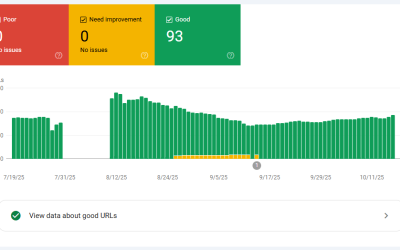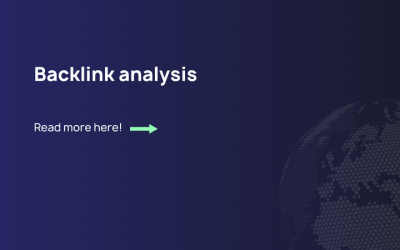A Backlink Profile is the full list of all external websites that link to your domain. It shows your site’s link building history, authority distribution, and overall SEO health. This profile provides detailed information about each referring domain. It covers authority, relevance, anchor text usage, link types, and the context of links. Search engines look at backlink profiles to judge a website’s trust, expertise, and ranking ability. This makes backlinks very important for organic search visibility.
Purpose & Context
Backlink Profile analysis serves as the foundation for understanding your website’s current SEO strength and identifying opportunities for strategic improvement. Unlike individual link evaluation, a comprehensive backlink profile reveals patterns, gaps, and potential risks that can significantly impact your search engine performance.
The main purpose of backlink profile analysis is to show how your link equity is spread out. This helps SEO experts make smart choices about future link building plans. It also helps them find harmful links that need to be disavowed. Additionally, it allows them to compare their performance with competitors in the same market.
Your backlink profile affects how search engines see your domain’s authority and expertise in certain topics. A diverse and high-quality backlink profile usually leads to better rankings. It also helps new content get indexed faster. Additionally, it makes a site more resilient during algorithm updates. These updates can penalise sites with manipulative or low-quality link patterns.
Key Components of Backlink Profile
- Domain Diversity: This refers to the number of different websites that link to your site. It is important to get links from many trusted sources instead of getting many links from just a few sites
- Authority Distribution: The domain authority scores from your linking sites should include a variety of sources. You should have some high authority sites, some medium authority sites, and some emerging authority sources in your industry
- Topical Relevance: This means how well linking domains match your website’s topic. Links from related industries are much more important than those from unrelated sources
- Anchor Text Distribution: The variety and naturalness of anchor text used in backlinks, avoiding over-optimization while targeting strategic keywords appropriately
- Link Type Variety: This includes a mix of different types of links. There are editorial links, mentions on resource pages, guest post links, and other genuine link types. These show patterns of organic link acquisition
Application in SEO Strategy
Regularly checking your backlink profile should be a key part of your SEO routine. This helps you find both chances and risks before they affect your rankings. Conduct a detailed profile analysis every three months. This helps track link acquisition progress and find any unusual patterns. These patterns may show negative SEO attacks or problems caused by algorithms.
Compare your backlink profile against top-ranking competitors to identify gaps in your link acquisition strategy. Search for trusted websites that link to several competitors but not to your site. These are great targets for future outreach campaigns.
Use tools like Ahrefs, SEMrush, and Moz to check your backlink profile’s health. Look at the ratio of dofollow to nofollow links. Also, consider the geographic spread of linking domains. Finally, track how fresh your link acquisition is. This will help ensure steady growth over time.
Practical Implementation Tips
Record your backlink profile before starting any new SEO strategies. This will help you see how specific campaigns affect your overall link portfolio. This historical tracking helps prove ROI and identify which tactics produce the highest-quality additions to your profile.
Set up automatic alerts to monitor big changes in your backlink profile. This includes a large number of new links, which may suggest negative SEO. It also includes sudden losses of links that could affect your rankings. Early detection allows for rapid response to both opportunities and threats.
What to avoid: Don’t focus exclusively on high-authority links while ignoring relevance and diversity. A backlink profile with only very high-authority links that are not relevant can seem unnatural. This may not give you the ranking benefits you want.
How Search Royals Can Help You
Building a strong, diverse backlink profile requires consistent acquisition of high-quality links from relevant, authoritative sources. Search Royals’ packages are made to improve your backlink profile. They offer carefully chosen link opportunities. These links boost your domain’s authority. They also keep a natural mix and relevant topics. This helps with sustainable ranking improvements in search engines.
FAQ Mini-Section
Q: How often should I analyze my backlink profile?
A: Conduct comprehensive backlink profile analysis monthly for active SEO campaigns, with deeper quarterly reviews to identify trends and strategic opportunities. High-value or competitive sites may benefit from weekly monitoring to catch changes quickly.
Q: What’s considered a healthy ratio of dofollow to nofollow links in a backlink profile?
A: A natural backlink profile typically contains 80-90% dofollow links, with the remainder being nofollow. However, this ratio changes depending on the industry and how links are acquired. The main goal is to avoid big imbalances that may seem manipulative to search engines.
Q: How many referring domains does a strong backlink profile need?
A: The number changes a lot depending on the industry and competition. Most competitive areas need hundreds to thousands of referring domains. Focus on quality over quantity—100 high-relevance, authoritative links often outperform 1,000 low-quality directory submissions.


